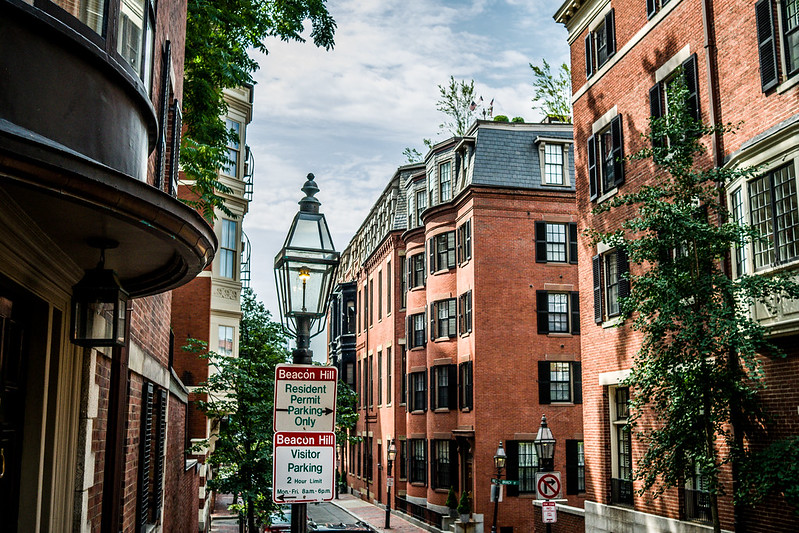
Photo: Phil Roeder (Flickr)
Boston introduces maximum parking ratios for large developments
19 October 2021
by Christopher Carey
Boston’s Transportation Department has launched a set of guidelines for new housing developments over 50,000 square feet that will limit the amount of parking that can be built.
Developers of large housing schemes must now complete a transportation demand management (TDM) point system that maps out how they will increase access to sustainable transport for their tenants.
The tool will provide developers with “proven strategies” to accomplish this, such as using subsidised transit passes, bike-share passes, carpooling, car-share, and parking pricing, which the city hopes will result in fewer people driving from new developments.
“As development grows in Boston, we need to keep working toward a city that works for everyone,” said Boston Mayor Kim Janey.
“These transportation management standards will help our city expand in the right way, by making sure building does not come at the expense of green space and encouraging use of public transit.”
Maximum ratios
Working in partnership with the Boston Planning & Development Agency (BPDA) and the Environment Department, the scheme also received support from the Bloomberg Philanthropies American Cities Climate Challenge.
“By reducing the number of required parking spaces in areas well-served by transit, we can lower the cost of new housing and decrease the amount of traffic in our neighbourhoods,” said BPDA Director Brian Golden.
The guidelines include new maximum parking ratios that model the amount of parking built based on a development’s walkability and mobility choices.

‘Maximum ratios’ will urge developments in walkable, transit-rich areas to build less parking than developments with fewer mobility options.
Cars to Casas
With real estate prices at all-time highs, dense US cities are increasingly seeking to optimise space usually reserved for cars.
Last week, San Francisco Mayor London Breed announced a new ordinance that would make it easier for housing developers to build on “auto-oriented lots” such as petrol stations and parking garages.
If the “Cars to Casas” ordinance is passed, developers would no longer need to seek a ‘conditional use authorisation’ from the Planning Commission in order to change zoning from auto to housing use — a step that can take up to 18 months.
“Housing policy is climate policy – we are at a crucial time where we can’t continue to kick the can down the road when it comes to either issue,” said Mayor Breed.
“People are becoming homeless now because of our inability to address the housing crisis, families are having trouble staying in our city because we have not built enough housing for them, and every day there is a new headline and a new study about how the impacts of climate change are taking a toll today. This ordinance will help us tackle both these issues by building a city that is designed first and foremost for people.”
Research has shown that 41 percent of the land area that is zoned for housing in San Francisco does not allow more than one unit per lot.
An additional 29 percent of the land zoned for housing in the city is limited to two and three-unit buildings.
Image: Phil Roeder (Flickr)









